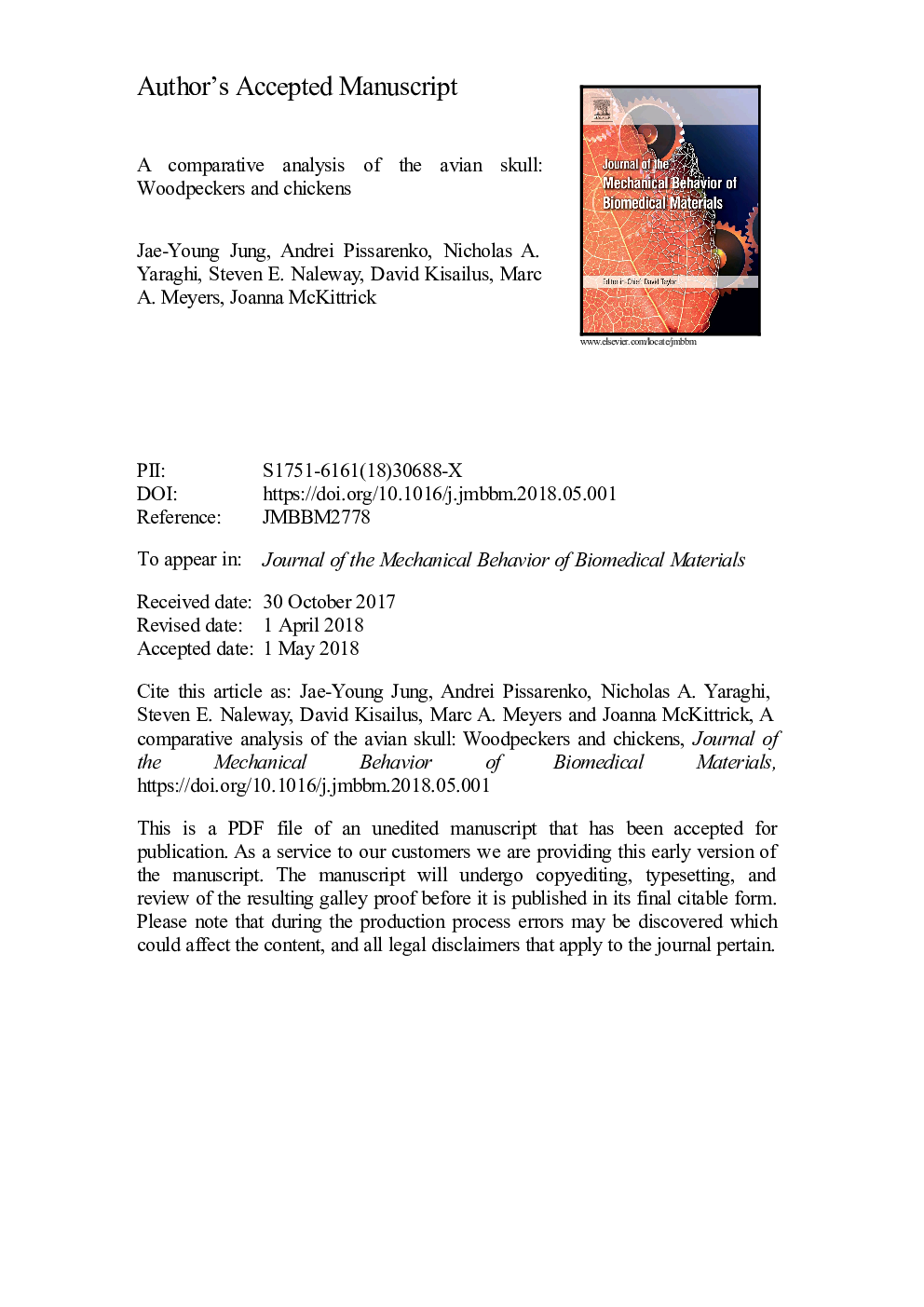| Article ID | Journal | Published Year | Pages | File Type |
|---|---|---|---|---|
| 7207022 | Journal of the Mechanical Behavior of Biomedical Materials | 2018 | 25 Pages |
Abstract
Woodpeckers peck at trees without any reported brain injury despite undergoing high impact loads. Amongst the adaptations allowing this is a highly functionalized impact-absorption system consisting of the head, beak, tongue and hyoid bone. This study aims to examine the anatomical structure, composition, and mechanical properties of the skull to determine its potential role in energy absorption and dissipation. An acorn woodpecker and a domestic chicken are compared through micro-computed tomography to analyze and compare two- and three-dimensional bone morphometry. Optical and scanning electron microscopy with energy dispersive X-ray spectroscopy are used to identify the structural and chemical components. Nanoindentation reveals mechanical properties along the transverse cross-section, normal to the direction of impact. Results show two different strategies: the skull bone of the woodpecker shows a relatively small but uniform level of closed porosity, a higher degree of mineralization, and a higher cortical to skull bone ratio. Conversely, the chicken skull bone shows a wide range of both open and closed porosity (volume fraction), a lower degree of mineralization, and a lower cortical to skull bone ratio. This structural difference affects the mechanical properties: the skull bones of woodpeckers are slightly stiffer than those of chickens. Furthermore, the Young's modulus of the woodpecker frontal bone is significantly higher than that of the parietal bone. These new findings may be useful to potential engineered design applications, as well as future work to understand how woodpeckers avoid brain injury.
Keywords
Related Topics
Physical Sciences and Engineering
Engineering
Biomedical Engineering
Authors
Jae-Young Jung, Andrei Pissarenko, Nicholas A. Yaraghi, Steven E. Naleway, David Kisailus, Marc A. Meyers, Joanna McKittrick,
